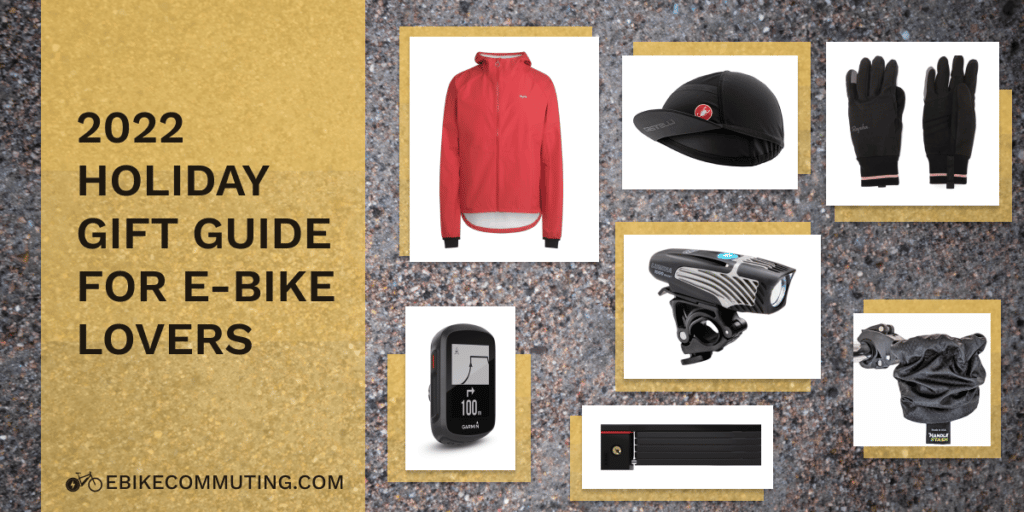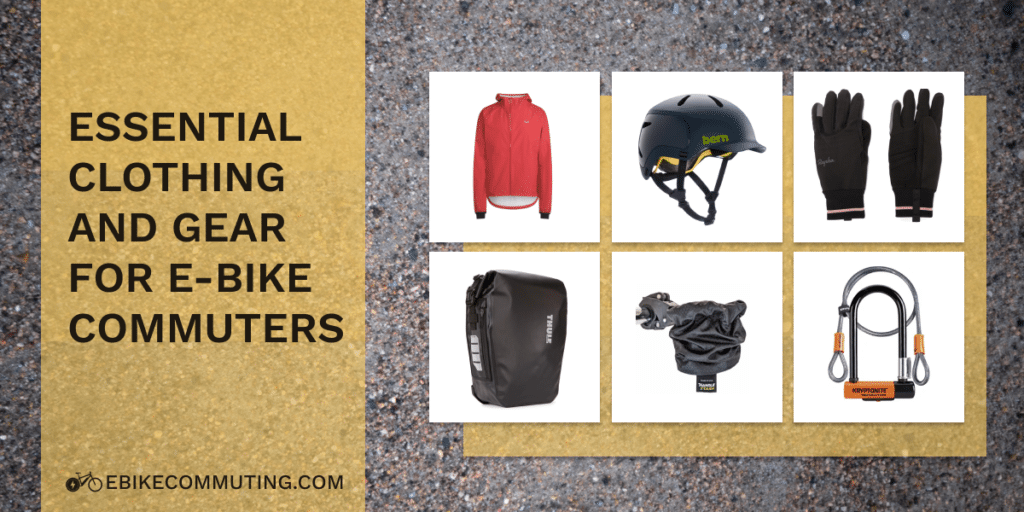👋🏻 We help our readers find the best quality e-bikes and gear to fit their needs. We strive to physically test the products that we recommend. When you buy through our links, we may earn a commission.
Bike lights are an essential piece of equipment for anyone who rides an e-bike, both for safety and visibility. Many of today’s e-bikes come with integrated lights, but sometimes they aren’t that bright. I like to add an additional bright light to the front of my e-bike and a red blinky tail light to the rear of the e-bike for added visibility.
This post covers all of the essentials you need to know about how to choose the best bike light for your e-bike, our top picks, and answers to frequently asked questions.
Table of contents
How to Buy the Right Bike Light
There are many different types and styles of bike lights on the market, so it can be difficult to know which one is right for you. Here are five tips to help you choose the best bike light for your needs:
1. Consider your riding habits. Are you mostly ride during the day or at night? Do you frequently ride in areas with low lighting? If so, you’ll need a light that has a high number of lumens so that you can see the road or trail in front of you in dark conditions.
2. Decide what type of mounting system you prefer. Some lights attach to your handlebars while others mount to your helmet or seat post. Think about where you want the light to be positioned and how easy it is to remove the light when not in use.
3. Choose a light with multiple modes (high, low, flashing) so that you can adjust the brightness and pattern depending on the situation. This allows you to conserve battery power when needed and still be visible even in dim lighting conditions.
4. Pay attention to battery life when selecting a light. If you’ll be using the light regularly, especially for long rides, it’s important to choose one with a long-lasting battery. The majority of lights are made with rechargeable batteries, which is great for the environment, but you’ll need to remember to charge them otherwise you’ll be stuck on a ride without lights. Look for lights that indicate how much battery power remains so that you’re never caught without adequate illumination.
5. Finally, don’t forget about the rear taillight! A taillight is just as important as a headlight, especially if you’ll be riding in the city. Many lights come with both front and rear options, making them ideal for commuters. Other add-ons, such as reflective strips or spoke mounted LEDs, can also increase your visibility on the roadways.
Which Bike Lights are Best?
Here are three of our top picks for bike lights on the market in 2023:
NiteRider Lumina 1200 Boost

Best Overall Bike Light. The NiteRider Lumina 1200 Boost headlight is hands down the best bike light out there. It’s got a super strong beam of 1200 lumens that can handle any situation, and seven different modes to choose from. Plus, the battery lasts up to 10 hours, so you’re good to go for even the longest rides. It’s also built to last with an IPX7 waterproof rating, so don’t even worry about the weather. And the handlebar mount is easy to attach to bars up to 35mm, so it fits any bike like a glove. And get this, it even has a locking mechanism for extra security during pit stops. This light is the ultimate combination of performance, versatility, and convenience, and that’s why we have it on our daily commuter e-bike.
Bontrager Ion Pro RT
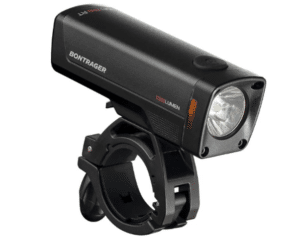
Runner Up Bike Light. If you’re looking for the best overall bike light, then we recommend the Bontrager Ion Pro RT. This light is packed with features, including a rechargeable battery, USB charging, an integrated mount, and a maximum output of 1,500 lumens. It’s also been designed specifically for road cycling use, making it a great option if you’re looking to commute or ride in low-light conditions.
Garmin Varia UT800
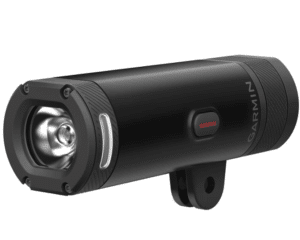
Best Budget Bike Light. If you’re on a budget but still want a high-quality bike light, then we recommend the Garmin Varia UT800. This light has a max output of 800 lumens and offers up to 6 hours of run-time from its rechargeable battery. It also comes with an integrated mount that makes attaching it to your bicycle quick and easy. And like all Garmin products, it’s backed by a solid reputation for quality and durability.
Which Bike Tail Lights are Best?
Here are two of our top picks for bike tail lights (the red blinky light on the back of the bike) on the market in 2023:
Blackburn 2Fer XL
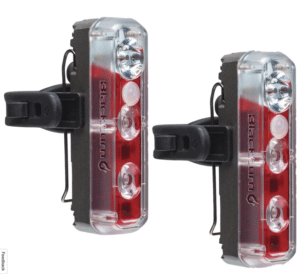
Best Overall Tail Light. The Blackburn 2Fer XL USB Front/Rear Light is a total game-changer as a rear light because it’s basically two lights in one. It’s got a wicked bright 40-lumen tail light. Also, the body is made of tough alloy and the lenses and LEDs are perfectly optimized for excellent visibility during night rides and when you’re sharing the road with cars. Plus, the mount design is pretty clever, so you can slap it on pretty much anywhere on your bike or gear. Bottom line: the Blackburn 2Fer XL is super versatile and really easy to use.
KTV Pro Smart Rear Light
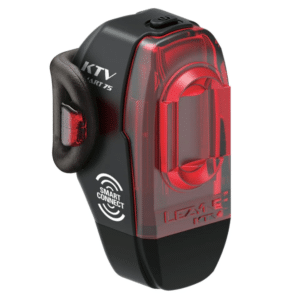
Best Budget Tail Light. The KTV Pro Rear Light is an affordable and compact tail light that can pump out 75 lumens with five different modes. Plus, it’s got a special Daytime Flash mode so you can stay visible all day long. It’s got an IPX7 waterproof rating and a 270-degree visibility with its Wide Angle Optics lens design. It’s also holds a charge for 19 hours which is excellent. All in all, it’s got the perfect mix of power, durability, and ease of use.
Common Questions
How many lumens do I need for a light to bike at night?
The answer is different depending on whether you are riding on roads or trails. If you are riding on roads, you will need at least 750 lumens. This is because cars have headlights that are around 1,000 lumens, so you need to be visible to them.
If you are going to be riding primarily off-road, then you can get away with a headlight that is lower than 500 lumens. This is because there won’t be any cars around and the light doesn’t need to be as strong. That being said, off-road typically means there are going to be unexpected rocks and ruts in the path. Getting a brighter light closer to 1,000 lumens means you will be able to see much better. For off-road riding I recommend getting a 1,000 or higher light mounted on the front of your bike AND getting a headlamp that can attach to your helmet. It’s super helpful having a helmet light so you can look to the left or right to see what is on the side of the path.
What is the strongest bike light?
When choosing the strongest bike light, consider factors such as lumens, beam pattern, battery life, and weight. Lumens measure light output, and higher values result in brighter lights. Some of the strongest lights offer over 2,000 lumens, providing excellent visibility in dark conditions.
However, a higher lumen count doesn’t guarantee a better light; the beam pattern is also crucial. Focused beams allow long-distance visibility, while wider beams illuminate surroundings more broadly. For extended rides or night riding, opt for a light with longer battery life. Additionally, consider weight, as heavier lights may be harder to mount and occupy more handlebar space. Seek a lightweight, compact option if weight is a concern.
One of the strongest bike lights available is the Lupine Betty R 14, with an output of up to 5,000 lumens.
How many lumens should a good bike light have?
There’s no definitive answer to this question as it depends on a number of factors, including the type of riding you’ll be doing, the terrain, and your personal preferences. However, we can give you some general guidelines to help you choose the right bike light for your needs. If you’ll be mostly riding on well-lit streets or paths, then a light with around 750 lumens should be plenty.
If you’ll be riding in more low-light conditions or off-road, then you’ll want a light with at least 1,000 lumens. And if you really want to be safe and visible in all conditions, then 2,000 lumens or more is probably the way to go. Of course, brightness isn’t the only thing to consider when choosing a bike light.
You’ll also want to make sure it has a wide beam angle so that you can see and be seen from all directions. And if you’ll be riding in wet weather, look for lights that are waterproof or have an IP rating of at least IPX4 (water-resistant).


